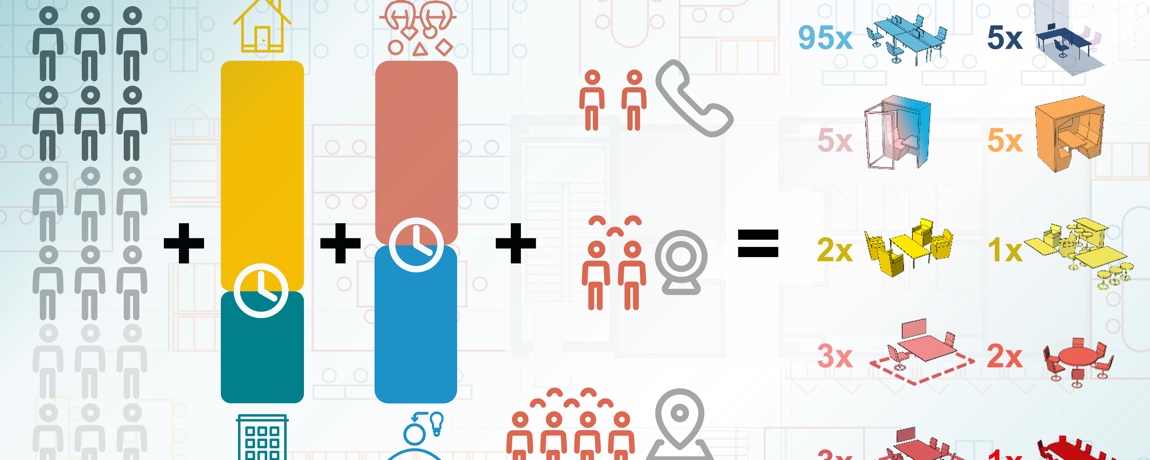
Services
- Pre-Design
Client Objectives
- Converted data sets to tailored programming recommendations using human-centered design techniques
- Provided client with a range of programming recommendations from which they could choose according to internal priorities and expectations
- Collaborated with CPG Architects to efficiently implement accepted programming recommendations
- Proposed further updates to ensure that the newly implemented workplace solutions were optimally used
CPG Architects
Applying Social Sciences to Office Design
Faced with the expectations of a newly hybrid workforce, organizations that relied on traditional offices for years are now evolving to meet their workers’ day-to-day needs. Everything – from space types offered to technologies employed, and even the amount of space available – has come directly into question as employers seek to optimize the well-being, and thereby the productivity, of their workforce by building a more accommodating workplace. The biggest challenge, though, is in programming a workplace so that it can serve the workforces of both today and tomorrow. For many organizations, this can seem like a harrowing – perhaps impossible – undertaking.
Toward this end, PLASTARC’s exhaustive programming services help clients ensure that their new spaces will support the workforce for many years to come, regardless of any unforeseen changes that may arise. By collecting quantitative and experiential feedback from all workers – not just department heads – to build a complete workplace profile, PLASTARC avoids the pitfalls of rough estimates and meticulously assesses factors like space type usage, individual workstyles, and technology solutions. This process, which is deeply informed by PLASTARC’s experience across several sectors, adds new dimensionality to the process of workplace data analysis, and gives way to tailored programming recommendations that reflect each client’s industry-specific, long-term needs.
When working with two separate clients, Commonfund and Atlas Air, PLASTARC and its design partner, CPG Architects, avoided a prescriptive approach by providing multiple programming options. The variations between these options reflected the clients’ top-of-mind considerations: for Commonfund, the viability of desk-sharing was a major question, whereas Atlas Air saw potential variability when considering occupancy levels. Supplying our clients with three distinct programming solutions offers a range of potential approaches, and ensures that each client retains a sense of agency when shaping their future workplace.
Once this process is complete, PLASTARC continues by evaluating the efficacy of clients’ newly implemented workplace solutions. Feedback from the workforce gives the client and PLASTARC insight into whether the updated spaces, policies, and technologies are achieving their intended impact, and what might be done to close the gap. These adjustments are seamlessly made, due in large part to PLASTARC’s and CPG’s prioritization of dynamic design. With each programming engagement, PLASTARC strives to create workplaces that aren’t just static portraits of a moment in time – instead, they’re living reflections of the workforce for years to come.

